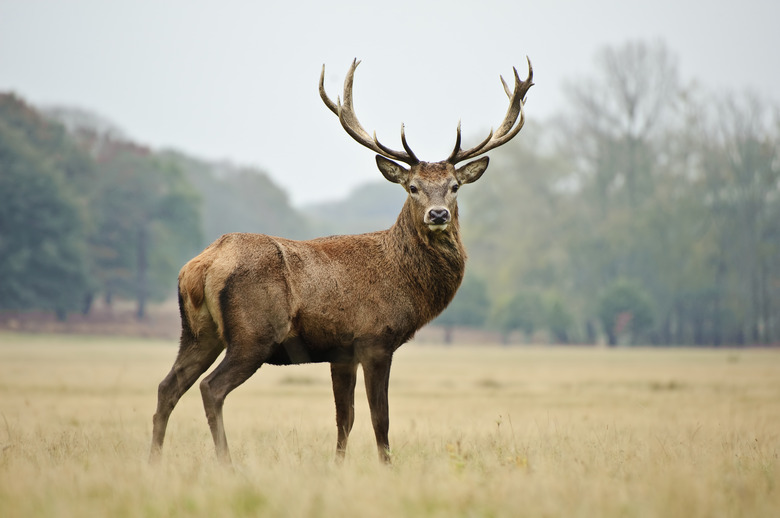Animals Found In The Humid Continental
The humid continental climate is present in much of the United States. According to Dr. Michael Ritter at the University of Wisconsin – Stevens Point, the humid continental climate is characterized by the interplay between cold polar air and warmer continental air. The University of Kansas Field Station team indicates that much of the region between the Rocky Mountains and the Appalachian Range is governed by the humid continental climate and that deciduous forests and prairie grasslands are abundant in the region. The Cofrin Center for Biodiversity at the University of Wisconsin – Green Bay adds that the humid continental climate extends north into southern Canada and the U.S. Great Lakes region. This zone is a vital source of diversity over the bulk of North America and is inhabited by numerous animal species.
Large Herbivores
Large Herbivores
Large mammals in the continental climate tend to be herbivores that can take advantage of the grasses that grow in the prairies and the leaves that are plentiful in the branches of deciduous trees like oaks and maples. These animals have to be fairly adaptable because the humid continental climate is often struck with harsh winters when arctic air brings powerful storms to the area. Bison, deer, antelope and horses are known to graze through the grasslands and migrate in search of fresh food when winters become harsh. These animals typically grow long fur to protect against the cold winters and shed them to help manage body temperatures in warmer summer months.
Small Mammals
Small Mammals
Some of the most iconic species of animal in the humid continental zone are the small mammals that are abundant in the area in all seasons. Squirrels, chipmunks, prairie dogs, skunks and raccoons are all native to the climate and survive by eating grasses and insects and scavenging the carcasses of larger animals. They often hibernate through the winter and birth large litters of young to maximize the number of offspring that will survive in a given generation. Mice, voles, rats and other vermin are also common sights in this climate and fulfill niche roles in the ecosystem.
Predator Animals
Predator Animals
Large predators are less common in the North American humid continental area because of the relative lack of cover that many species depend on to hunt efficiently. Effective predators tend to be pack hunters and scavengers who can move with herds of prey animals and kill young or old members. Wolves, coyotes and other wild dogs are often the most successful of these predators, although wolves are more typically seen in the forested portions of the humid continental. Bobcats and cougars are the primary feline hunters and also tend to be found in more heavily forested areas. Bears are found in this climate as well, though they are usually smaller black bears who survive through scavenging rather than hunting.
Birds, Reptiles and Other Animals
Birds, Reptiles and Other Animals
Snakes are as common in the humid continental zone as in other areas and can be particularly successful in areas of long grasses. Lizards and frogs also inhabit the area, but water tends to be seasonally abundant in the humid continental so amphibian and reptile species must be hardy or remain close to large bodies of water if they require significant quantities of it to survive. Birds are common in grasslands and deciduous forests and range in size from small finches and doves to larger geese and crows. Waterfowl can be seasonally abundant in the humid continental and often migrate through it twice a year. The United States sees millions of snow geese migrate through the humid continental each year.
Cite This Article
MLA
Thryn, Damien. "Animals Found In The Humid Continental" sciencing.com, https://www.sciencing.com/animals-found-humid-continental-8481152/. 22 November 2019.
APA
Thryn, Damien. (2019, November 22). Animals Found In The Humid Continental. sciencing.com. Retrieved from https://www.sciencing.com/animals-found-humid-continental-8481152/
Chicago
Thryn, Damien. Animals Found In The Humid Continental last modified March 24, 2022. https://www.sciencing.com/animals-found-humid-continental-8481152/
